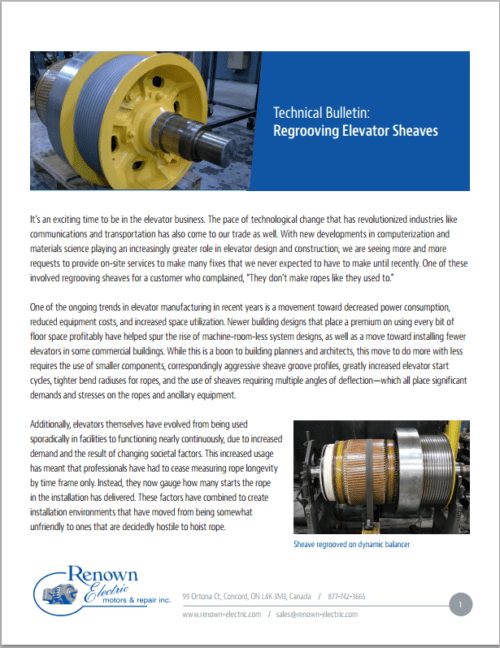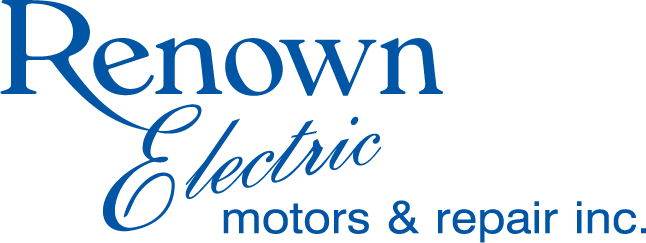While all elevator sheaves should be regrooved at least once, the type of groove and frequency of use determines how much additional maintenance is necessary. The groove that you select for your elevator sheave has an effect on the extent of wear that both the sheave and rope demonstrates over time. This is an especially important consideration at a time when elevators are being used at a near constant rate in many commercial buildings and facilities. Choosing the right groove shape can reduce the likelihood that the sheave will need to be replaced or repaired.
Older elevators operate with sheaves that feature round grooves, which is ideal for rope life. Round grooves open at an angle of 45° with groove excess allowances of up to 20%. The larger size of this groove type means that the rope is subjected to less abrasion and fatigue than it would in another type of groove. It is therefore the groove shape of choice for most wire rope manufacturers. Round grooves also have downsides, however. The excess breadth means that they are also larger than other groove types, which may be undesirable in limited spaces. They also provide the least traction.
 If traction and size are a concern, another option is a modern V-groove or undercut U-groove. V-grooves have an opening angle of 35° or 45°. They are characterized by a V-shape opening in which the wire rope does not make contact with the bottom of the groove, and is instead supported by its walls. V-grooves increase the pressure between the rope and sheave, creating a gripping action that increases traction. The same goes for undercut U-grooves, which have an opening angle of 40° and an undercut angle of up to 105°. The consequence of additional traction, however, is that both the rope and sheave are subjected to increased wear.
If traction and size are a concern, another option is a modern V-groove or undercut U-groove. V-grooves have an opening angle of 35° or 45°. They are characterized by a V-shape opening in which the wire rope does not make contact with the bottom of the groove, and is instead supported by its walls. V-grooves increase the pressure between the rope and sheave, creating a gripping action that increases traction. The same goes for undercut U-grooves, which have an opening angle of 40° and an undercut angle of up to 105°. The consequence of additional traction, however, is that both the rope and sheave are subjected to increased wear.
No matter what type of grooves is employed, both sheaves and grooves should be monitored to catch signs of wear early. While grooves designed to increase traction generally do require more attention, round grooves can also damage wires if implemented improperly. V-grooves and undercut U-grooves force the rope to seat itself into the groove more quickly by exerting a higher, pinching pressure. This can lead to fatigue failure, abrasion and pinching. Grooves that are too wide, however, can also cause wires to roll and twist, leading to high stranding and “bird cages.”
Renown Electric is dedicated to offering outstanding service to our customers in all aspects of electric motor repair, remanufacture, and field service. We are happy to offer our expert engineering support and advice. To learn more about maintaining elevator sheaves and grooves, visit the Renown Electric website and download a free copy of our eBook today.


